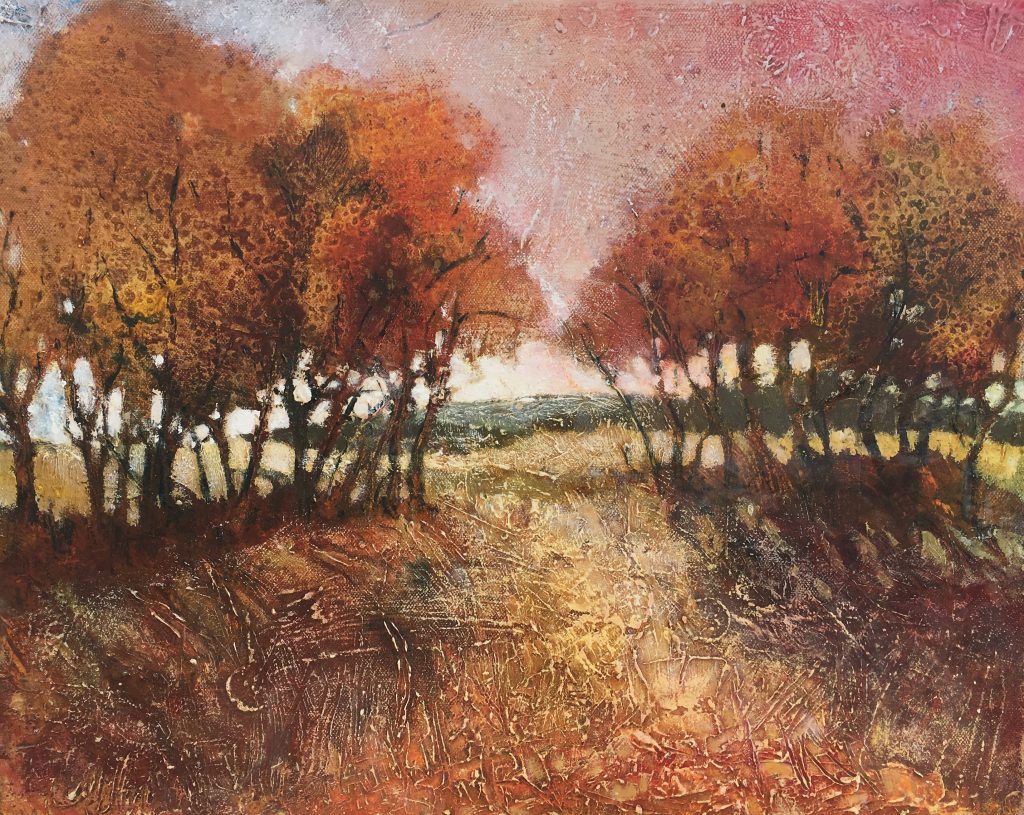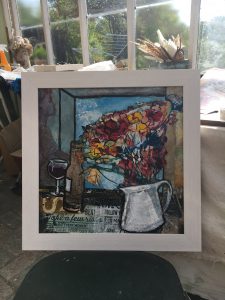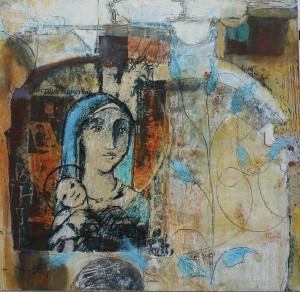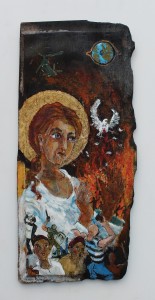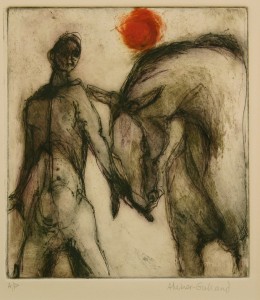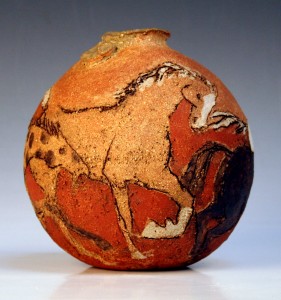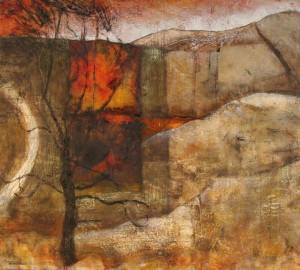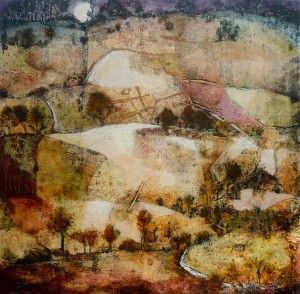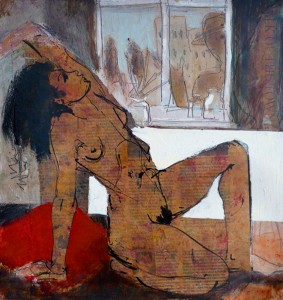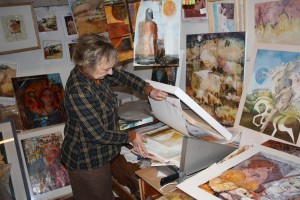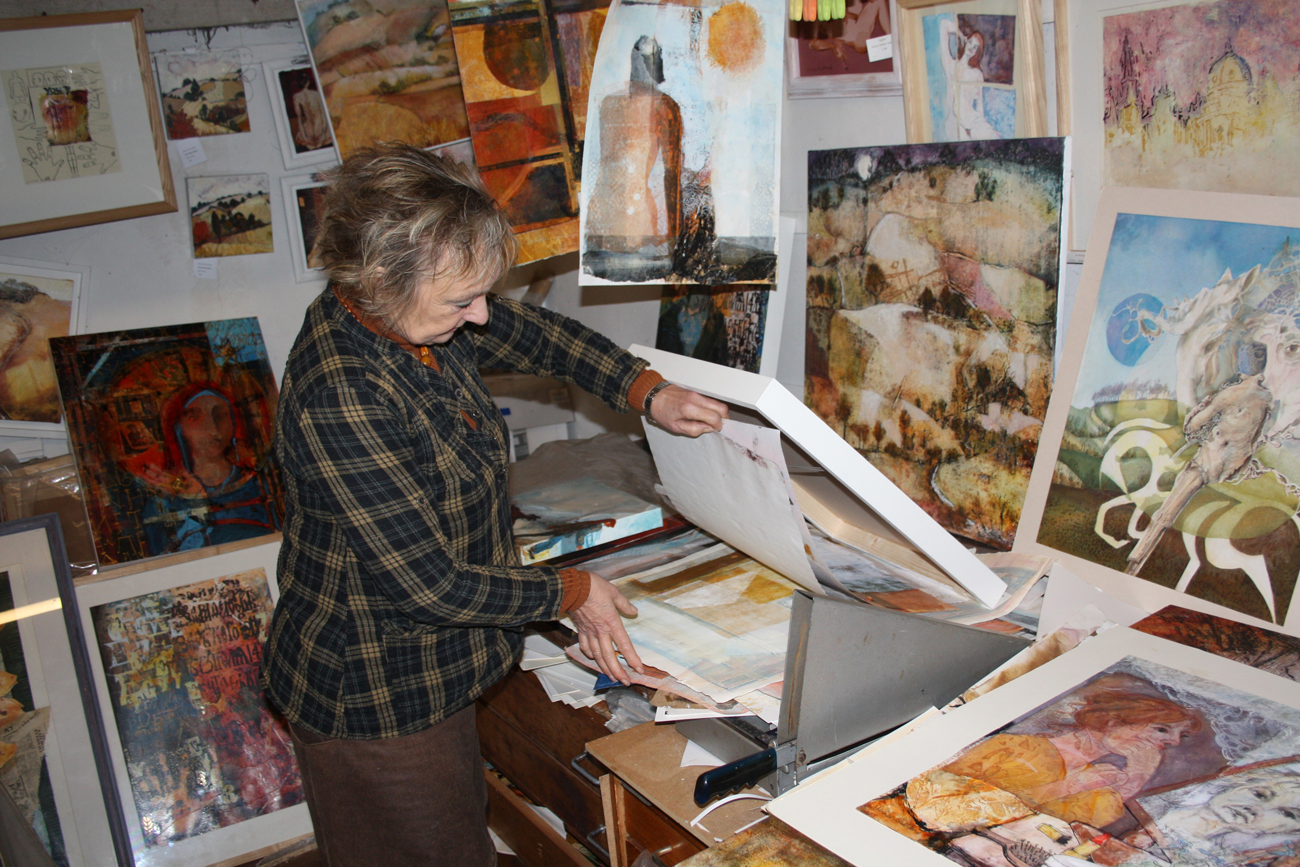
A retrospective exhibition ‘Alison Milner-Gulland – A Life in Art’ opens at the Horsham Museum & Art Gallery on Saturday 7th March 2020. This gifted Sussex artist has been reflecting on her creative life as her 80th birthday approaches.
Alison Milner-Gulland, like the seasons of the year, returns to a cycle of subjects that have always inspired her: the ancient, Sussex and the Downs, iconography, Russia and the Middle East, Oxford, antiquity and the human form, and music. As this retrospective exhibition illustrates one informs the other.
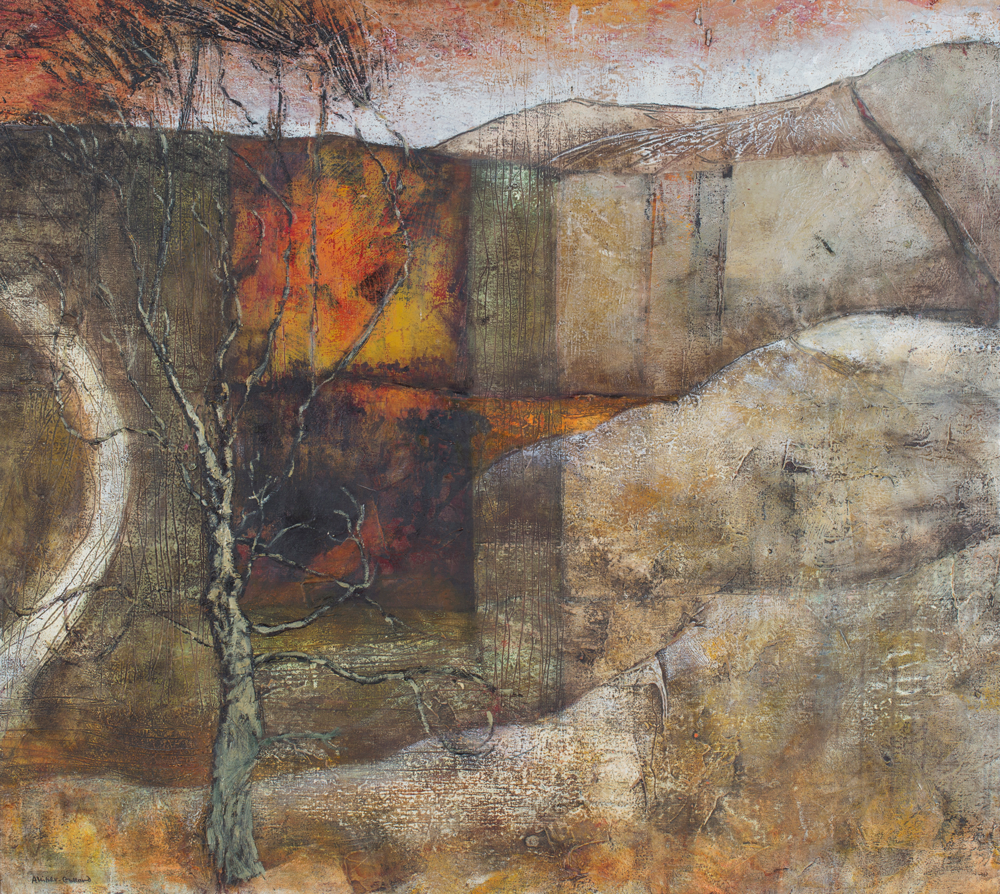
These subjects directly record the artist’s life and her experience of the world. Alison will often re-visit a piece and re-work it many times reflecting the layers she perceives as she interprets the world around her. Alison’s work is not linear, she zig zags about so the date of a piece is not always relevant or remembered, her pictures develop and evolve as she continues to work on them giving expression to her connectedness with the world she inhabits.
For more than a decade my brother, Nick, and I have visited Alison at her studio which nestles at the foot of the South Downs. Nick describes it as “An amazing space – well-organized chaos, framed works are hung wherever wall-space permits or stacked on the floor. After being greeted by the family’s Jack Russell terrier, Dotty, and navigating a maze of pictures, mounting materials and packaging you come to the main work area of the cottage studio. Here an architect’s chest conceals numerous unframed prints, stacked on top of these are further prints, oils on canvas and works in progress beneath works drying on a washing line. Occasionally the sound of her nearby chickens, geese, guinea fowl or sheep are heard from outside. Negotiating the livestock and braving the elements you come to a separate studio dedicated to Alison’s work in ceramics. A colder but brighter and neater space, inherently slightly dusty from the powders, glazes and clays used to create the work. Along two walls are shelves displaying recent vessels, mostly figurative or musically inspired, but with a few trial abstracted landscape designs scattered amongst them.”
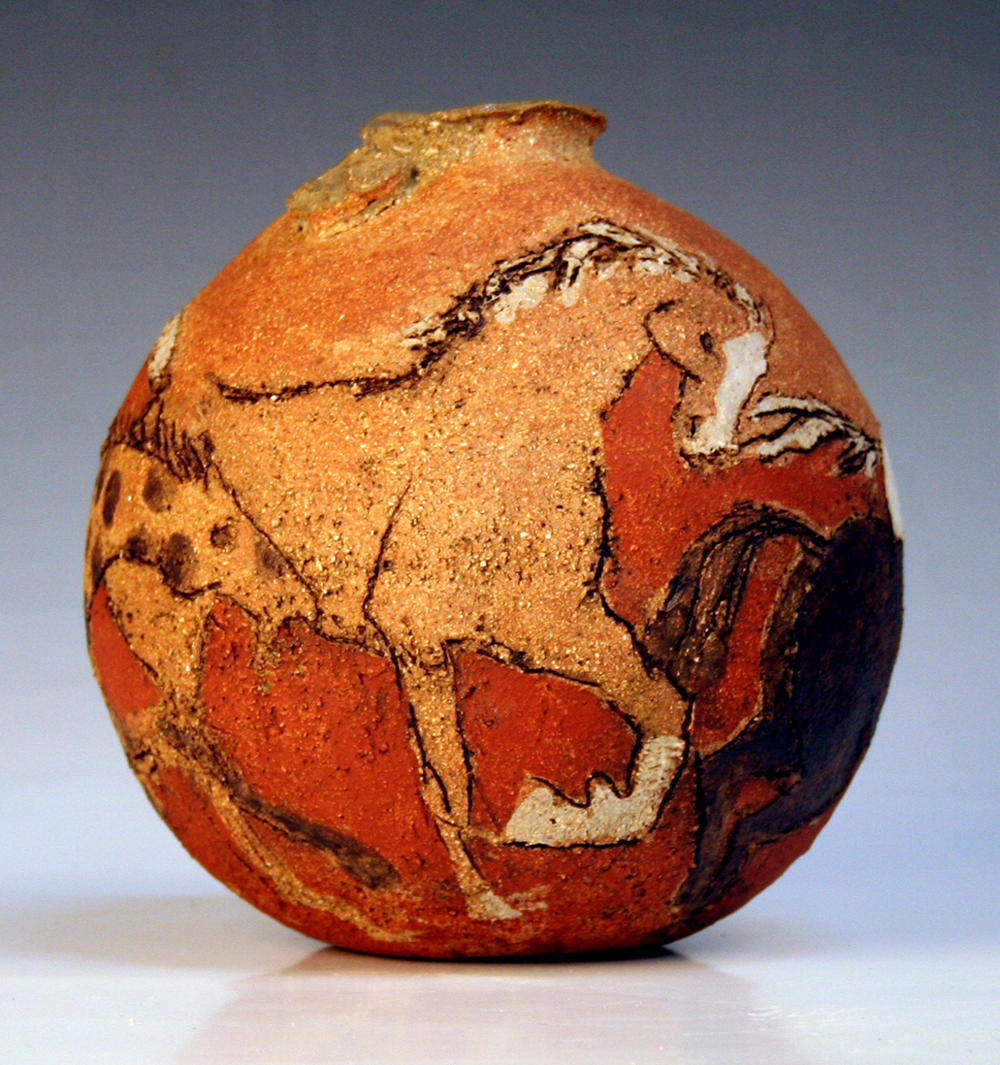
Alison has been drawing since she was old enough to hold a pencil.
From her teens until only a few years ago Alison regularly rode in the South Downs committing to memory the play of light and the elements on the landscape bound up with the movement of her horse. The elevated perspective that riding affords is evident in many of her landscapes. Alison has often remarked how in her imagination the rhythm of the horse combines with the movement in the landscape, a theme which recurs in her work.
The exhibition is brought alive through Alison’s comments – reminiscences which inform and accompany the works on display.
At first glance Alison’s work is accessible and uncomplicated, but over time the work reveals layers, subtle details and evolving depths, a spirituality, all of which serve the talent of this gifted artist.
Each of the works reflect the layered rhythm of this artist’s life. Her practice is reflective and always layered. This visual-poet in the landscape allows us to glimpse our place in the procession of human history, and something beyond our immediate perception of the world.
It is these qualities which gift Alison Milner-Gulland’s work with such a particular and distinctive artistic voice.
Alison Milner- Gulland – a Life in Art opens on the 7th March and runs until 27th June 2020 at Horsham District Council’s Horsham Museum & Art Gallery. This is an exceptional exhibition and entry is free. To find out more visit www.horshammuseum.org.
